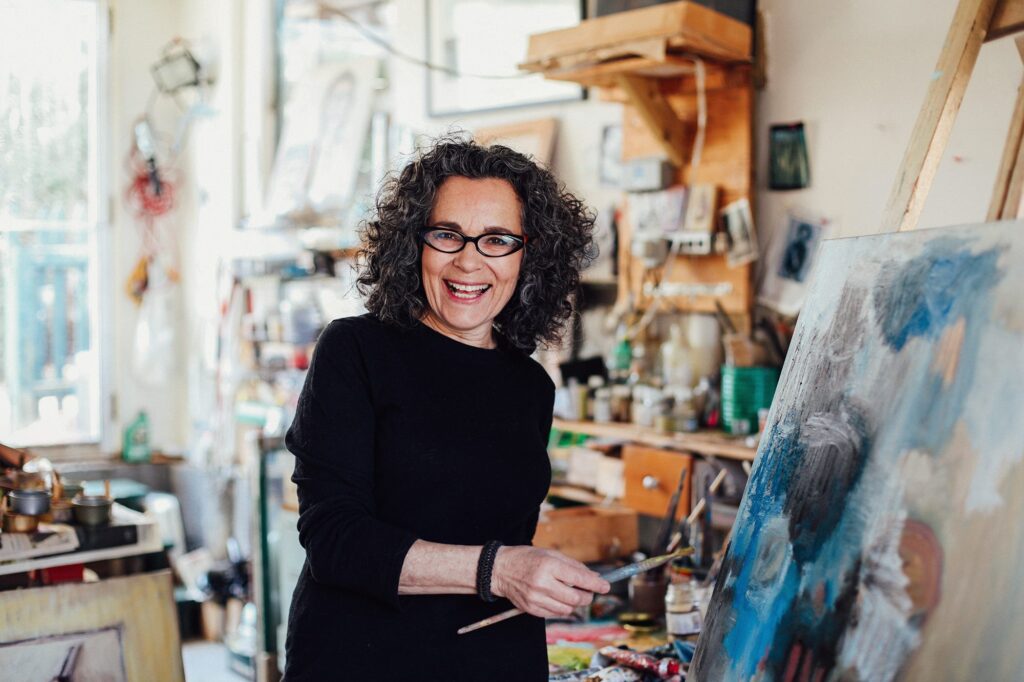About
I was born and raised in Toronto but moved to Nova Scotia more than 35 years ago settling in Halifax. I spent seven years living in Mahone Bay, a scenic town on the South Shore of the province. Now I make my home in West Pennant, a small, coastal, fishing community not far from the city. When I want lobster, I call my neighbour.
I did a year of university then dropped out - hey, it was 1968! - to become a hippie living off the grid outside of Saskatoon, squatting on ten acres of someone else's land. I sat on the front doorstep of the one-room farmhouse and watched the clouds in that big, blue prairie sky, the horizon a straight line in the distance. Two horses grazed the land.
I’ve made art of one kind or another since I was a child. Back then art was offered as an option in high school and I happily took it. As a teenager, I studied with practising artists at Three Schools and Art’s Sake. They opened up this suburban child’s eyes. I continued with art courses at York University while studying for a B.A.
When I went back to university in the mid-70s, I studied drawing. The late 70s saw me working as a freelance photographer documenting the burgeoning experimental dance and theatre scenes in Toronto; in the early 80s I was involved with the film and television industries. Then, in pre-computer days, I studied to be a graphic designer at George Brown College.
Painting took me by surprise. I was a mature student at NSCAD University. It wasn’t even on my agenda; I thought I was going to be a sculptor. But, since picking up a brush, I haven’t looked back.
Both the NS Department of Tourism, Heritage and Culture, and the Canada Council have awarded me grants. Several paintings from the series Empty Bowls, Sacred Vessels are in the collection of the Nova Scotia Art Bank; charcoal drawings from Holocaust and Memory were exhibited in Clermont-Ferrand, France.

“Intense emotion is stressful, and we look to artists to feel for us,
to suffer and rejoice, to describe the heights of their passionate response to life
so that we can enjoy them from a safe distance.”
Diane Ackerman
A Natural History of the Senses

Artist Statement
Though I now consider myself to be an abstract painter, I didn't start out that way. My early paintings were representational but expressionistic and loose and bold. That approach gradually evolved into abstraction. It was a natural and slow process, very much unplanned.
I’ve always been an instinctive, intuitive painter coming at the surface straight from the gut. Abstraction suits these inclinations: the quick gestures and strokes; the back-and-forth dialogue; the immediacy.
Repetitive motifs - circles and bowls - and other marks, insinuated themselves into the visual language that grew alongside this evolution.
Conceptual sources range from the pathology of Holocaust survivors with Alzheimer’s in the exhibition “Holocaust and Memory”, to the feminine implications of “Empty Bowls, Sacred Vessels,” to explorations into language and memory in the series “bowl cradle arc vessel” and “Broken English and Other Languages”. However, I don’t believe art has to have a reason, make a statement, or be political. I’m a firm believer in “art for art’s sake.”
I paint in series, sometimes themed, other times not, working on several paintings at once. Sizes vary but most recently squares appeal.
My palette is simple; I gravitate towards certain colours. I live with and prefer earthy tones, but my paintings tend towards brighter shades, still often earthy but with pops of colour to harmonize and enliven them.
I love watching an abstract painting materialize under my hand. Every mark elicits another. My graphic design background serves me well, helping with aesthetic choices, and spatial relationships, and steering the painting toward a cohesive whole. An abstract painting can be resolved at many points. It’s all about finding the balance - the sweet spot - between order and chaos.
